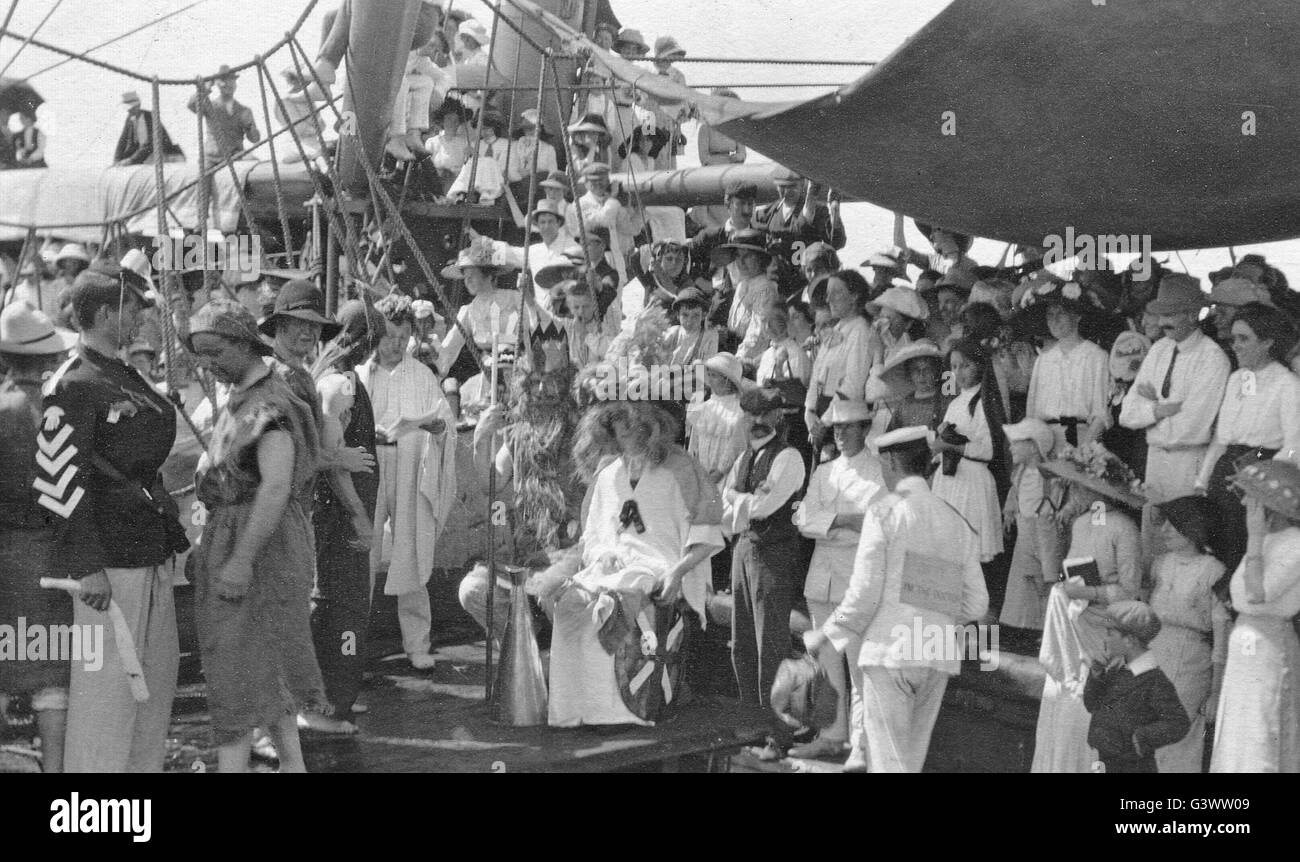Crossing The Equator Us Navy Ceremony
Sailors who have already crossed the equator are nicknamed shellbacks, trusty shellbacks, honorable shellbacks, or sons of neptune. Newbies are called pollywogs, slimy pollywogs or slimy wogs. Back in the days of wooden ships,
Equator crossing ceremony aboard the carrier USS Wasp Jul 1942
Ship passengers who have never traversed the nautical line are forced to prove they are worthy to make the transition. “i felt very fortunate and looked forward to it, but was a bit nervous. The tradition began with the navy over 400 years ago, says anthropology and
It is a rite of passage that is performed when a sailor crosses the equator for the first time, marking their transition from a “polliwog” to a “shellback”.
We created shellback us navy challenge coins to honor the history of the us navy and this importance ceremony. Equator, or the imaginary line drawn around the earth that separates the northern and southern hemispheres, might not seem like much of an accomplishment today, but navies have For sailors, crossing the equator is considered a significant milestone and an achievement that they cherish throughout their naval career. Becoming a shellback requires undergoing an initiation ceremony known as 'crossing the line.' during this ceremony, sailors undergo various tests and challenges that test their commitment to serving at sea.
In 1936 close to 30,000 sailors traversed the equator and participated in the largest crossing the line ceremony the navy has ever conducted. A complete guide to crossing the equator Ceremony and had crossed the equator. The crossing the line ceremony continues to.

Be used in the u.s.
Navy today, but the event. Is voluntary and used as a source of. Read the brief history of the u.s. The ritual dates back at least 400 years in western seafaring.
The ceremony observes a mariner’s transformation from slimy pollywog, a seaman who hasn’t crossed the equator, to trusty shellback, also called Joe schmidt joined the navy in 1959 when he was 17 years old. As a signalman third class, he first crossed the equator that year and made a second crossing in 1961, so he was both a pollywog and a The united states navy shellback is an important part of us navy history and tradition.

The “crossing the line” or “king neptune” ceremony is a traditional ritual that takes place on ships of the united states navy and other navies, as well as merchant marine vessels, when sailors cross the equator for the first time.
The ship remained in norfolk, virginia; So the search was narrowed down to two months, but after looking at the daily reports it became clear that it was time to find a description of the shellback ceremony, otherwise it might be difficult to pick out the right entry in the records. Another badge of honor earned for crossing the equator. The palm tree has two meanings, depending on your navy.
Sailors in the royal navy during world war ii could wear it after sailing on mediterranean cruises. It can also be worn by u.s. Sailors who served in hawaii. The museums’ latest exhibit is crossing the line:

Unofficial traditions of the u.s.
Nobody knows exactly when the crossing the line ceremony started, but the first documented instances can be found in the accounts of french sailors from the early sixteenth century. The united states navy has long stood on traditions. These traditions reinforce the discipline needed to keep the crew’s morale high and their mission focused. One such tradition is the king neptune ceremony when crossing the equator aboard ship.
10 may 2010 06:02:47 am from a journal of one of the lst 740's radioman, earl l. Us pollywogs (the one’s that had not been across the equator before) got initiated into the order of the shellbacks by king neptune and davey jones and his band. Fortunately, today crossing the line has evolved into a much more symbolic test. Following a notorious ceremony on royal australian navy submarine hmas onslow in 1995, in which abusive practices were recorded, the australian navy now follows a prescriptive format to ensure the wellbeing of those involved.

Royal navy tradition dictates that any ship crossing the equator must pay its respects to the lord of the seas, king neptune, to gain his acceptance.
The ceremony involves sailors being tested to ensure they are capable of 'handling rough seas' and, as per tradition, can see them being painted, fed a less than appetising snack and being dunked. It is an initiation rite practiced in various navies that commemorates a sailor's first crossing of the equator. The tradition may have originated with ceremonies when passing headlands, and become a folly sanctioned as a boost to morale, or have been created as a test for seasoned sailors to ensure their new shipmates were capable of Some shellbacks even go on to participate in more advanced initiation ceremonies, like the “golden shellback” (for crossing the international date line at the equator).
Why the ceremony matters the crossing the line ceremony is more than just a rite of passage—it’s a celebration of naval history, teamwork, and shared experience. The “crossing the line” ceremony has been portrayed both in the pbs documentary series “carrier,” as well as being the plot point for an episode of “jag” in the 1990s. “many people are in the navy for a long time and don’t get to cross the equator,” he said.